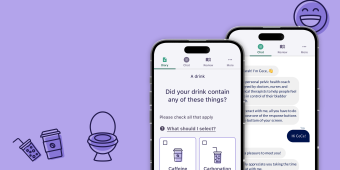If you’ve been working in medicine for decades, it can be a bit of a shock when all of the sudden you’re tasked with building software for healthcare providers. It’s an entirely new discipline, with different possibilities, different norms, even a different language.
The truth, though, is that the best hospital software starts with you.
Need to bridge the gap between you and your healthcare software provider? Here’s how
At Table XI, our practice depends on user-centered design — understanding the users, and putting their needs at the core of anything we build. That method doesn’t stop at consumer products. When we work on software in healthcare, it’s the practitioners and administrators and even patients that now become our users. We need to know as much about how you work as possible, so we can figure out the best places for technology to slot in and improve your day-to-day. That also means we need you to know what parts of your day are unnecessarily challenging, and what you’re hoping technology can do for you.
Because it can be so hard to communicate between healthcare and tech, a lot of healthcare workers end up shutting down, pouring requirements into an RFP, and leaving it to the software company to figure the rest out. But all that does is result in more of the same clunky, not-quite-right software. Whether you’re adopting off-the-shelf healthcare software or building a custom application, before you embark on a healthcare software project, consider taking these six steps to create a shared vision and define your goals.
Get your team talking about what software for healthcare can do
Having everybody list their needs for a new piece of medical software is like asking a group of blind people to identify an elephant by touch. You’ll end up with a snake for the trunk, a tree for the legs, and no clear picture of what you actually need to be developing.
To avoid ending up with a hodgepodge of features that feels like design by committee, start by getting your team to at least agree that they need to agree. Then, set a series of recurring meetings (they’re harder to skip) with your stakeholders, so you can hammer out the details using the following steps before you start the project.
Make sure everyone understands that healthcare software can’t cure everything
Healthcare software products are oftentimes seen as panaceas. You’ll hear people rattle off lists of all the things the new system will take care of, but if you ask how it will take care of those things, no one can really tell you.
Defining a medical software system as pretty much only “not what they have right now” won’t give you a product roadmap. And projecting everyone’s hopes and dreams onto the software sets an impossibly high bar for success. No finished product can live up to that hype. Before you even reach out to software vendors for healthcare, work with your team internally to set expectations.
Start small, and don't over-specify what healthcare software applications should do
When we’re trying to avoid making healthcare industry software a panacea, it’s easy to take the opposite tack, getting incredible specific and scoping out every single thing the software will, and won’t, do.
Fight that urge. You don’t want to spend a ton of time defining something, only to find out that it’s technologically not possible, or too expensive, or just not the right fix.
Choosing between healthcare software companies? What to know
At the same time, you do need to be specific enough about what the product will do to make it accomplishable. Start small, otherwise you run the risk of building a Swiss army knife when what you need is a scalpel. Software is just a tool, and no tool can solve everything for everyone. The trick is to figure out what the common denominator is among people’s needs, then build that.




